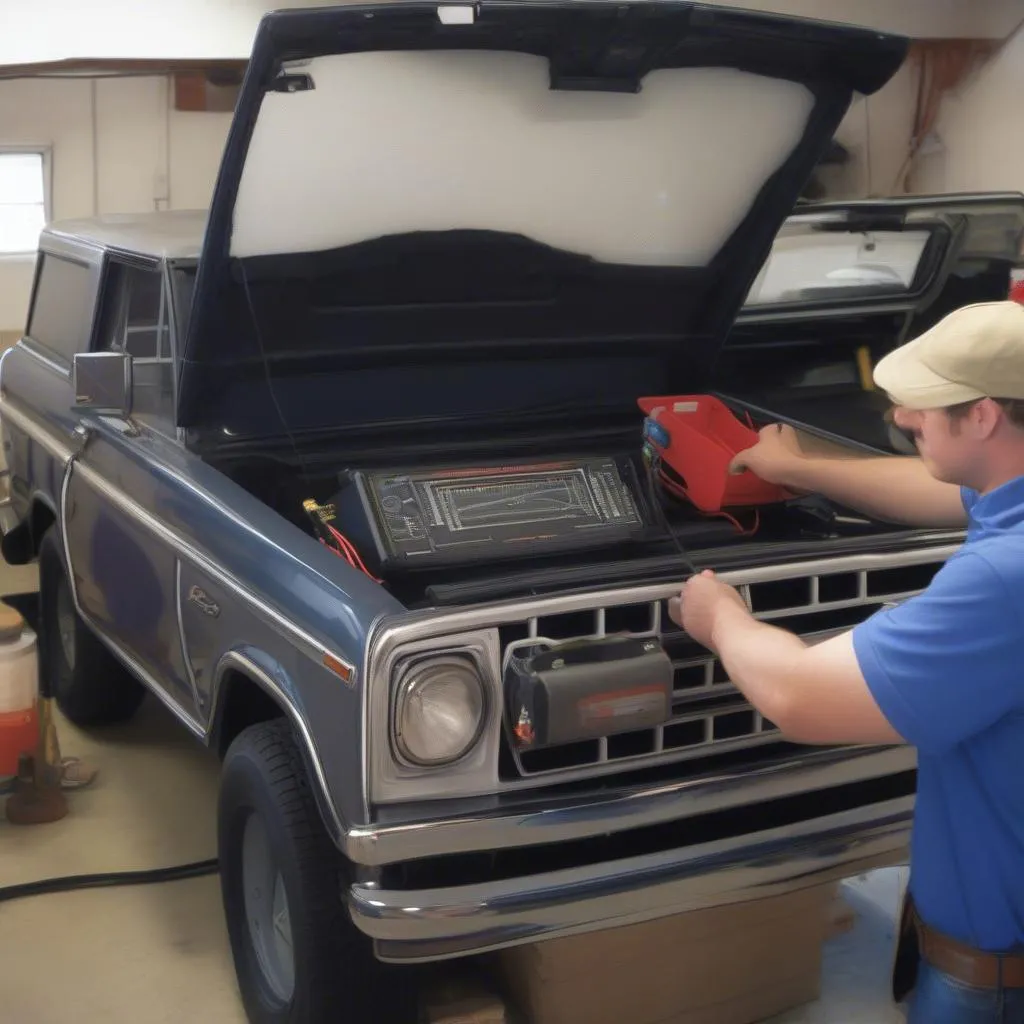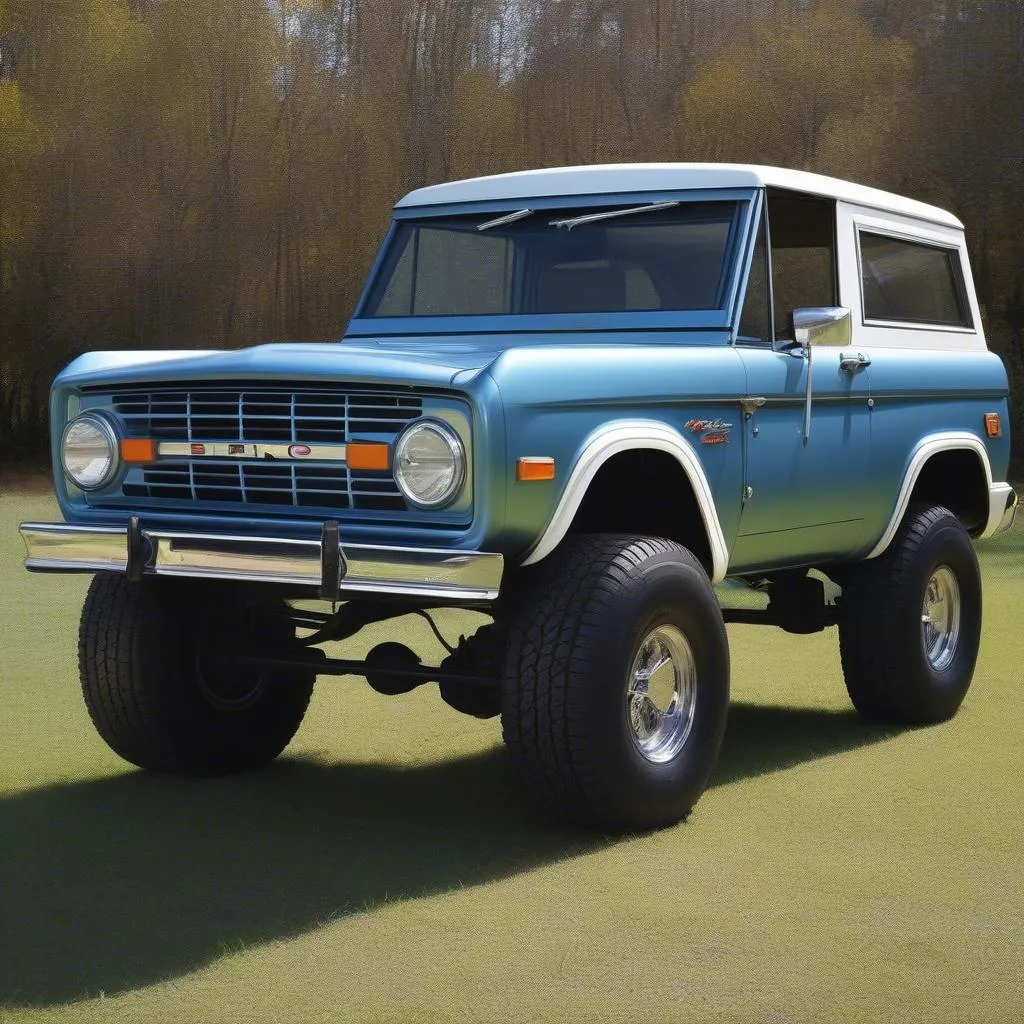Have you ever found yourself staring under the hood of your classic Ford Bronco, yearning for the diagnostic ease of a modern OBD-II system? You’re not alone! The thought of swapping out that older EEC-IV system for its OBD-II successor has crossed the minds of many a Bronco enthusiast. But is it worth it? Let’s dive into the nitty-gritty of an EEC-IV to OBD-II conversion and explore if it’s the right move for you and your off-road beast.
Understanding the Why and the How
Why Ditch the EEC-IV?
From a mechanic’s perspective, the clunky EEC-IV system, while reliable for its time, can feel like using a rotary phone in the age of smartphones. It lacks the sophisticated diagnostics and real-time data that modern OBD-II scanners provide. Imagine being able to pinpoint a faulty sensor or troubleshoot an engine hiccup with a few taps on a screen – that’s the allure of OBD-II.
“The ability to easily monitor engine parameters and diagnose issues in real-time is invaluable for both mechanics and car enthusiasts,” says Arthur Miller, a seasoned automotive engineer and author of “Automotive Electronics Demystified.”
But it’s not just about diagnostics. The OBD-II swap can be a gateway to integrating newer tech into your Bronco. Think aftermarket performance chips, wideband oxygen sensors, and even digital dashboards – all designed to seamlessly communicate with an OBD-II system.
Navigating the Swap
Now, let’s talk nuts and bolts. A successful EEC-IV to OBD-II conversion isn’t as simple as plugging in a new connector. It often involves:
- Engine Control Unit (ECU): Replacing your Bronco’s EEC-IV ECU with a compatible OBD-II unit is the cornerstone of this swap. This often means sourcing one from a later-model Ford vehicle with a similar engine.
- Wiring Harness: Since the EEC-IV and OBD-II systems speak different electrical languages, you’ll likely need to adapt or replace sections of your Bronco’s wiring harness.
- Sensors: OBD-II relies on a wider array of sensors for its enhanced diagnostics. Be prepared to install additional sensors, such as an oxygen sensor after your catalytic converter, if your Bronco doesn’t already have them.
 OBD-II System Upgrade
OBD-II System Upgrade
Is it Worth the Effort?
The decision to embark on an EEC-IV to OBD-II swap is a personal one. If you value modern diagnostics, crave the ability to easily add aftermarket performance upgrades, and possess the technical know-how (or the budget for a professional installation), then the answer could be a resounding “yes!”
However, if your Bronco is primarily a weekend cruiser and you’re content with its current performance, sticking with the tried-and-true EEC-IV might be the more practical choice.
Common Questions About the EEC-IV to OBD-II Swap:
What are some common issues encountered during the swap?
- Wiring Woes: Incorrect wiring is a common culprit behind swap headaches.
- Sensor Compatibility: Ensuring you’re using sensors that communicate effectively with your new ECU is critical.
- ECU Programming: In some cases, the replacement ECU might require programming to play nicely with your Bronco’s specific engine and transmission.
Can I do the swap myself?
Tackling the swap yourself hinges on your mechanical aptitude and comfort level with automotive wiring. If you’re a seasoned DIYer with a good understanding of automotive electronics, it’s achievable. However, for those less experienced, seeking professional help is highly recommended to avoid potential complications.
What are some resources for finding compatible parts and information?
Online forums dedicated to Ford Broncos are treasure troves of information. You’ll find discussions on compatible ECUs, wiring diagrams, and even step-by-step swap guides shared by fellow Bronco owners.
 Ford Bronco Community
Ford Bronco Community
Exploring Alternatives
If a full-blown EEC-IV to OBD-II swap feels like a leap too far, there are alternative solutions to bridge the gap between your classic Bronco and modern diagnostics:
- Bluetooth OBD-II Adapters: These handy devices plug into your existing diagnostic port and transmit data wirelessly to your smartphone or tablet. While they won’t offer the full spectrum of OBD-II functionality, they can provide valuable insights into engine performance.
- Aftermarket Gauges: A suite of aftermarket gauges can grant you real-time readings on vital parameters like oil pressure, coolant temperature, and voltage, enhancing your awareness of your Bronco’s vital signs.
Keeping Your Bronco Thriving
Ultimately, the best approach is the one that aligns with your goals, budget, and skillset. Whether you choose to embrace the complexities of an OBD-II conversion or opt for a more incremental upgrade path, prioritize thorough research, meticulous planning, and the use of quality parts. And remember, there’s a vast and supportive community of Bronco enthusiasts eager to share their experiences and lend a helping hand.
Ready to Explore More?
- Troubleshooting Common Ford Bronco Electrical Issues: Dive deeper into diagnosing and resolving electrical gremlins that might be plaguing your Bronco.
- Ford Bronco Performance Upgrades: Unleash the full potential of your Bronco with our guide to performance-enhancing modifications.
Need expert advice on diagnostic tools or have a burning automotive question? Contact us on Whatsapp at +84767531508 for 24/7 support from our team of automotive specialists. We’re here to help you keep your Bronco running strong!